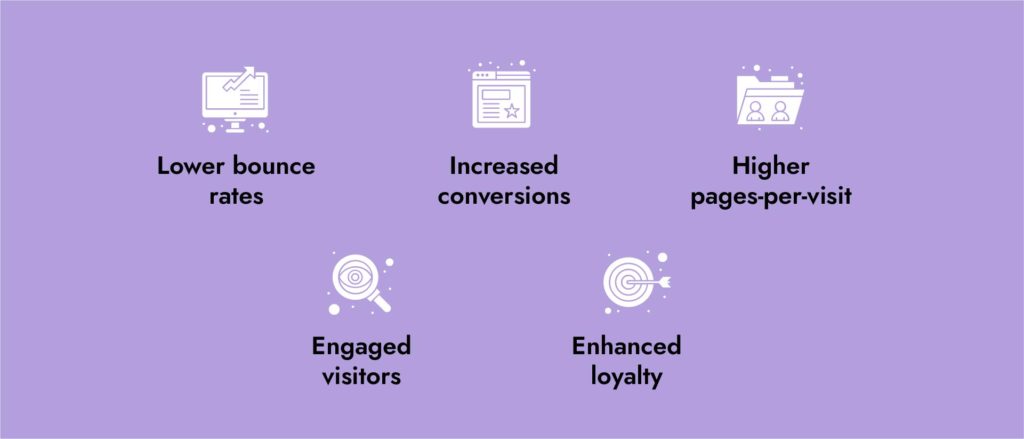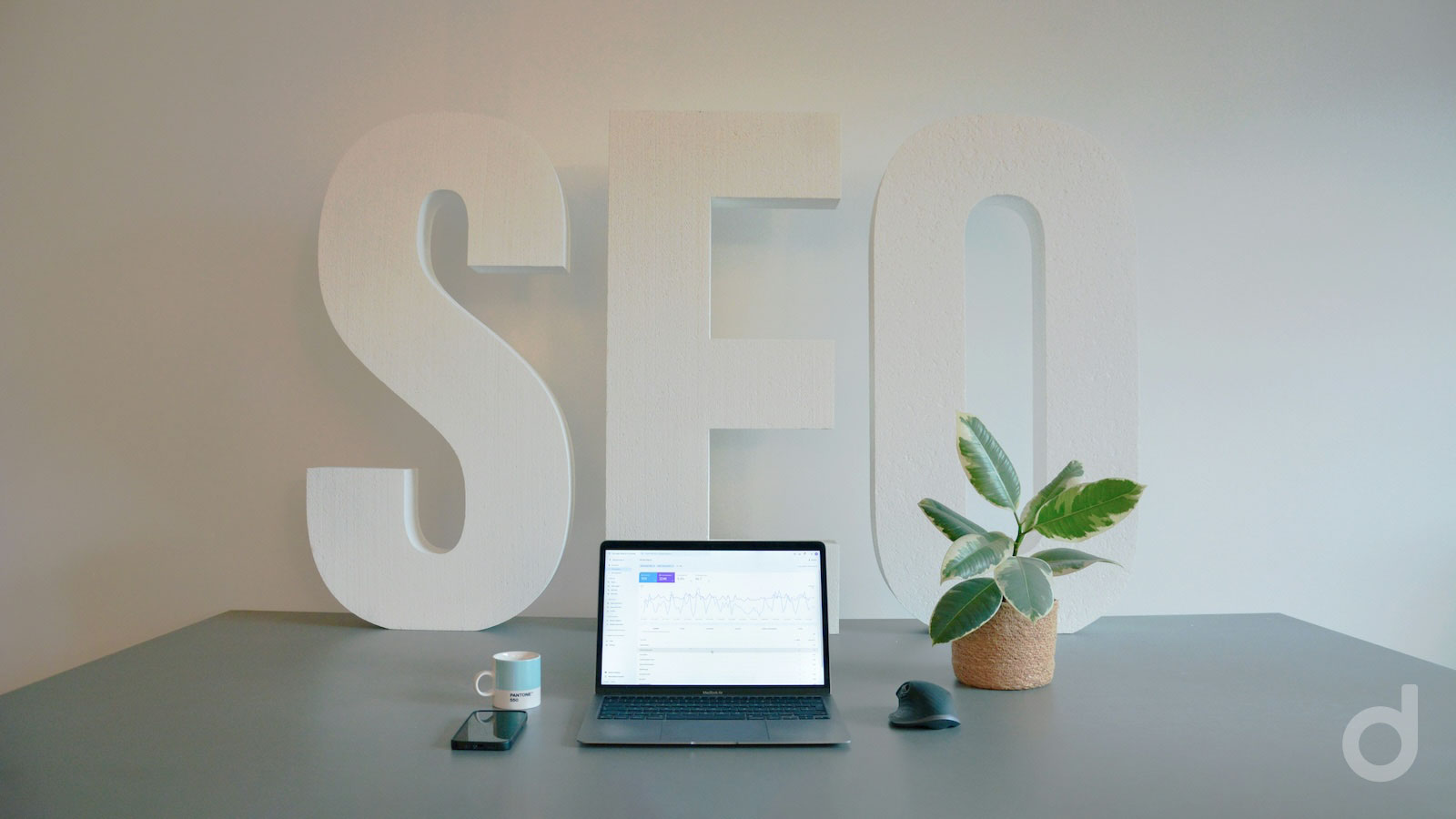In the current digital environment, grabbing and holding website visitors’ attention is more difficult than ever. Because social media updates and other current activities are among the many diversions available to internet users, people often quit websites fast if they don’t feel like they’re being engaged. For example, have you clicked on a very creative or engaging ad on social media but ended up on a website that you don’t want to view for even a second?
To combat this and increase your website’s stickiness — that is, its ability to capture visitors’ attention and encourage prolonged interaction — you must employ strategic tactics. Let’s dive deeper!
What is a Sticky Website?
The capacity of a website to draw users in and maintain their interest over time is referred to as website stickiness. Think of your website as a magnet that entices visitors and encourages them to stay and come back. Because “stickiness” is directly correlated with better user engagement, repeat visits, and maybe higher conversions, it is an essential notion for online success.
In other words, a sticky website invites users to linger longer and explore its features and information. It’s not only about making the first few clicks; it’s also about designing an experience that makes people want to stay, engage, and come back. In addition to being good for sales and marketing, this interaction tells search engines like Google that your website is worthwhile and relevant to people, which might raise your results.

How to Calculate Stickiness?
Comprehending and evaluating the stickiness of your website entails monitoring many crucial indicators that offer valuable information about user engagement and interaction. These metrics are crucial for assessing how well your website keeps users on it and tempts them to come back over time.
It’s important to understand that what defines excellent performance can vary greatly between different kinds of websites and sectors before diving into these measures. Setting up benchmarks and monitoring trends over time is crucial to figuring out which indicators are most pertinent and significant in your particular situation.
Gathering the Data
You must use analytics software like Google Analytics, which is extensively used and provides detailed insights into user behaviour on your website, to start monitoring website stickiness. Ask your web developer or the person in charge of your website’s technical maintenance if you’re not sure if analytics are installed on your website.
Google Analytics is easy to set up and free of charge, and it starts offering useful information right away. It’s crucial to remember that past data won’t be accessible right away after installation. It takes time for the platform to collect enough data to offer insightful analysis; generally, data from 1,000 visits is advised before making any judgments.
Digi Tip: You may optimize for even higher engagement by using extra user behaviour monitoring tools like Crazy Egg, SessionCam, or Hotjar. These tools can provide you with a more detailed picture of visitor activities.
Key Metrics for Measuring Stickiness
Bounce Rate
The percentage of visitors to your website that arrive and then exit (or “bounce”) without engaging further is known as your bounce rate. A reduced bounce rate is a sign of website stickiness since it shows that users are interacting with your content after visiting your page. For example, bounce rates of 40% are usually regarded as great, whereas rates above 70% could indicate problems that require addressing.

Example: If your website’s bounce rate is 45%, it means that 55% of visitors are exploring additional pages or taking actions beyond the initial landing page.
Pages Per Session
The average number of pages a visitor visits on your website in a single session is called “pages per session.” This measure tells you how many visitors are looking around your website. Greater engagement and deeper involvement with your material are indicated by a larger average of pages per session, even though some visitors may discover what they need quickly.

Example: Achieving four pages in a single session, for instance, indicates that users are actively exploring your website and are highly engaged.
Average Session Duration
The average session duration measures the average amount of time visitors spend on your website per session. It reflects how engaging and relevant your content is to users. Longer average session durations typically indicate that visitors are spending more time consuming your content, which is often associated with higher levels of engagement.

Example: A three-minute session length on average shows that users are engaging with your website’s content for extended periods, indicating a high degree of engagement.
Calculating Stickiness
Calculating stickiness includes knowing how frequently visitors connect with your website during predetermined periods, in addition to these engagement metrics:
- Daily Active Users (DAU): The number of unique users who interact with your website daily.
- Monthly Active Users (MAU): The number of unique users who interact with your website over a monthly period.
The ratio of DAU to MAU is used to compute stickiness, which yields a percentage that shows how frequently people return to your website over a certain period. A stickiness ratio of 10%, for example, indicates that 10% of your monthly active users visit your website every day, indicating a steady stream of interaction and user retention. As per Sequoia Capital, the average DAU/MAU is between 10-20%, with a mere handful of startups surpassing 50%.
How to Make Your Website Sticky?
Using user engagement strategies, ongoing development, and strategic planning are all necessary to create a sticky website. The following are crucial tactics to increase stickiness and entice users to return:
- Strategic Content Planning: Develop a well-structured content architecture that aligns with user interests and addresses their needs. For example, a health and fitness website could plan weekly content updates covering different aspects of nutrition, workouts, and mental wellness to keep users engaged and coming back for new information.
- Effective Onboarding Processes: Ensure your website’s onboarding process is clear, concise, and intuitive. Smooth onboarding reduces user churn and enhances engagement. Learn from successful examples like Duolingo, which simplifies the initial user experience, leading to high retention rates.
- Incorporating Gamification Elements: To inspire users, use gamification elements like challenges, progress monitoring, and incentives. Fitbit is an example of how gamification may improve user engagement by using badges and challenges to encourage users to keep active.
- Utilize Advanced Technologies: Leverage tools and technologies such as AI-driven personalization, chatbots for instant support, and data analytics to understand user behaviour and preferences. For instance, an e-commerce site can use AI to recommend products based on past purchases and browsing behaviour, enhancing user experience and increasing conversions.
- Enhance User Experience (UX): Put speed, mobile responsiveness, and intuitive navigation first! Picture a website that loads slowly, isn’t phone-friendly, and has confusing menus. Not exactly a formula for engaging users! Making sure your website loads quickly, works well on mobile devices, and is simple to use will make visitors pleased and encourage them to return.
- Interactive and Visual Content: Websites with a lot of text can easily get boring. Add some spice to your information by including interactive quizzes, user-interesting polls, and multimedia elements like infographics and movies. This turns the formerly passive process of consuming material into an active one, increasing user engagement and leaving a lasting impression.
- Community Engagement: Encourage community involvement by providing a forum for dialogue and the sharing of experiences. This might be a blog comment area, a social media group, or a forum. Next, take an active part in these conversations to foster a sense of community, foster trust, and keep people returning for the continuous conversation.
- Personalization: By customizing content and recommendations to visitors’ interests, personalization may increase the stickiness of your website and keep them coming back for more. Use visitor data to recommend deals, goods, or material that is relevant to your site’s visitors, making the experience of using it personalized and worthwhile.
- Optimize Calls-to-Action (CTAs): Place clear and compelling CTAs strategically throughout your website to guide visitors towards desired actions, such as subscribing or purchasing. A software company can strategically place CTAs offering free trials on product pages, encouraging visitors to sign up and experience the software firsthand.
- Feedback and Usability Testing: Get and evaluate customer input regularly to improve the functioning and usability of your website. To properly improve user experiences, employ tools for customer retention analysis and extract useful insights from SaaS measurements.
- SEO and Content Marketing: Leverage SEO services to get more organic traffic and visibility. Having well-written, optimized content makes your website stand out as a useful resource in your field and encourages regular visits and user interaction.
- Continuous Analysis and Adaptation: To assess the success of a website, keep an eye on important indicators like bounce rates, session length, and conversion rates. Adjust tactics in response to data insights to improve stickiness and user experiences over time.
Building a website that draws visitors in and encourages continuous interaction is a continual process that calls for commitment to strategic content planning, user experience, and constant improvement.
Remember that user interaction is mutually beneficial. You can create a devoted following that returns time and time by putting the needs of users first and creating a friendly atmosphere. This will help you accomplish your website’s objectives and advance your online success. Create a sticky web that will keep users interested and your business growing.




